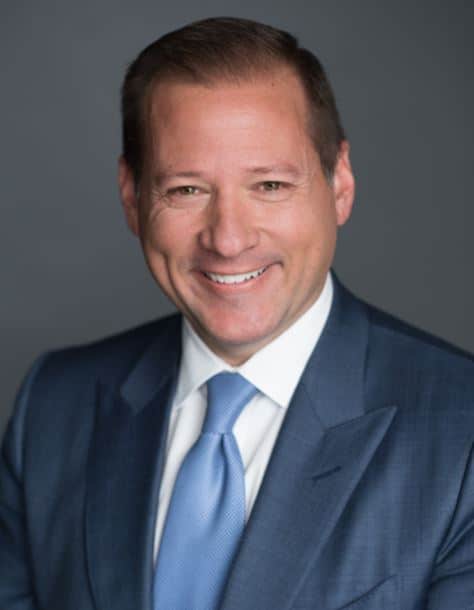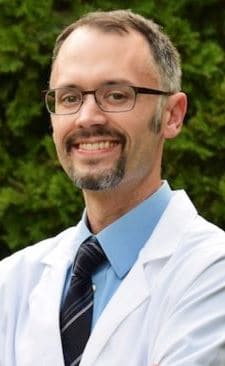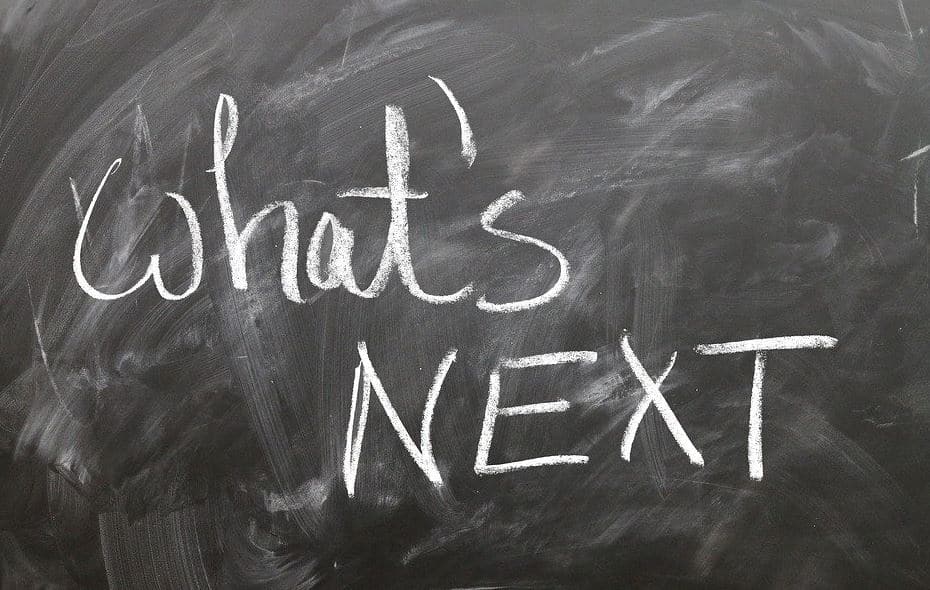The hearing healthcare industry continues to face an uncertain future as the result of ongoing technological and regulatory disruption. Furthermore, changes in consumer behavior continue to push professionals to adapt beyond the traditional ways of delivering care.
As we look to the new year, we would like to introduce readers to a new series at HHTM: Hearing Healthcare 2020. In this new series we will begin to explore the forces behind the changes and disruptions impacting the industry in more detail, in order to better understand how they will shape the future of hearing healthcare.
For our first column in this series, HHTM President and CEO, Kevin Liebe, caught up with Brandon Sawalich, President of Starkey Hearing Technologies and Chairman of the Hearing Industries Association (HIA), to discuss OTC hearing aids, disruptive technologies and the future of the hearing industry.
KL: As the industry prepares for OTC rules to be finalized in 2020, what advice would you give to professionals in private practice today that are concerned about how it will impact their clinic?
Sawalich: At Starkey, we believe better hearing is best achieved through the hands of the hearing professional. While OTC is disruption, it’s not a new concept. In the 90’s, it was catalog sales. In the 00’s, it was Songbird. In 2010’s, it was PSAP’s and OTC. Disruption is always present and should be embraced because it pushes us to be better. This includes private practice.
If you settle for status-quo and “business as usual,” you will end up like Blockbuster, Circuit City, Radio Shack or Toys r Us.
Private practices should take every opportunity they have to educate their patients on the services they provide – the services they can’t receive over the counter. A hearing aid is not a commodity, and I believe the overall process of obtaining hearing help is often misunderstood by the general public. I saw this confusion firsthand in Washington, D.C., when I was speaking with members of congress and federal agencies about hearing loss, the role of the professional and hearing technology. Take for example, the photos most reports use from stock photography showing clunky and outdated devices. This says a lot about the public’s image of hearing aids. Starkey’s vision is to eliminate the stigma and make hearing aids cool.
Assuming the regulations are safe and protect the patient, OTC hearing aids should be embraced as an entry point for professionals. If someone declares they need hearing help, and an OTC product helps them come forward, it’s an opportunity for the hearing professional to educate this person on technology and solutions. Bottom line, quality care and service is always needed, and the human touch delivers that quality best.
KL: Compared to the past, consumers are taking a much more proactive role in their healthcare today, including their hearing healthcare. How do you think this might change how we deliver care in the future?
Sawalich: Throughout my 25 years in the hearing industry, I’ve seen the service approach evolve from being “patient-focused care” to “patient-driven care.” We’re definitely approaching the decade of the digital patient.
In present time, people who are looking for better hearing will do much more online research prior to the initial contact with a hearing professional. Then, once they step into a practice, they are seeking health advice, not a sales pitch. People want to be helped, not sold.
The industry has talked about telehealth for years. While there are many good options, including what Starkey offers, hearing professionals don’t seem to be adapting quickly to the technology. The remote programming and service is available, but a large population of patients and hearing professionals are not yet embracing the technology. I predict this will change in the next 3-5 years. Change takes time, and we understand that.
KL: Starkey has really been putting a lot of emphasis on artificial intelligence (AI) and sensor technology (i.e., fall detection). Would it be fair to say that you believe this technology represents the future of the hearing aid industry?
Sawalich: There is technology with genuine AI capabilities, and then there are companies that simply use the term “AI” in their marketing. At Starkey, our AI and sensors are embedded in the hearing aid itself. We have reinvented the hearing aid with significant technology advancements. Three years ago, Mr. Austin and I agreed, “no more incremental improvements.”
Consider the last ten years. Beyond wireless connectivity and the introduction of IIC products, what’s been the biggest breakthrough? You can easily come up with progressions that are only slightly better or given a re-brand. How many incremental improvements can you identify in directional microphones or feedback cancellation?
We were tired of the glacial progress, and I wanted to change it up. We wanted Starkey to continue to focus on better hearing, but to also develop new ‘Healthable’ technology. So, I recruited and hired new talent, allowing us to think differently and deliver features integrated into our products that have high consumer adoption like physical activity tracking and virtual personal assistant technology and adding cutting edge features like social engagement measurement. In combination these features and our other industry leading hearing technology move us from a single purpose device to multi-purpose devices that appeal more broadly to today’s patients.
KL: How do you see this type of technology evolving over the next several years?
Sawalich: AI will evolve the opportunities in our industry, but, in my opinion, the big advancements will come in new Integrated Circuit development and capacity. I know that what we are working on and what we will be able to do in two years will make today’s product and features a thing of the past. At Starkey, task one in any new hearing aid is pristine sound quality, seamless connectivity and the best app experience. Months ago, our CTO, Achin Bhowmik, stated that we are declaring a war on connectivity.
We are aggressively working on enhancing our connectivity, and that takes time. Imagine if you could pair a hearing aid as easy as an AirPod. Plug and play still comes into play, but comparing AirPods to hearing aids is like comparing apples to oranges. With AI and forthcoming technology, Starkey will deliver an overall hearing eco-system that goes beyond the hardware of a hearing aid. The hearing experience will involve a small, discreet RIC or IIC that allows you to download firmware and features; a consumer app; accessories to enhance the hearing experience and connectivity; healthable features; and immersive telehealth services backed by professional care.
Often misunderstood by consumer electronic groups and experts outside of the hearing industry, better hearing and premium hearing technology are not a DIY project. It’s about quality, service and care.
KL: What do you think is the biggest opportunity we have as an industry as we look out into the next 5 or 10 years?
Sawalich: There is not a better time to be in our industry. The world holds an aging population, and technology is advancing and should be embraced. The biggest opportunity is for the hearing professionals to work together for the advancement of overall hearing healthcare. We need to separate the product from the service, and the industry needs to sharpen its saw.
What I mean by that is keep the fitting skills sharp and immerse yourself in the art of fitting products. In 2004, the industry was approximately 85% custom products and no one questioned impression-taking. Now it’s becoming a lost art. If someone wants to separate themselves from OTC, start offering custom products as a solution. It’s a competitive advantage.
KL: What do you think is the biggest risk we face as an industry in the next 5-10 years?
Sawalich: This is a great question I get asked often. This may not be a popular opinion, but I think it’s ourselves. Manufacturers, hearing professionals and associations need to focus on better hearing and advancing technology and fittings skills.
This industry is primed for growth, but there is no silver bullet. We must work hard. Manufacturers, of course, want increased market share and earnings. Instead of racing to deliver new products, we must focus on conversations about education, product performance, and patient fitting and counseling. The industry cannot settle for the “easy button.” If we do, we will not advance. The associations need to put differences aside – we have enough political parties to read about.
We all need to come together for the betterment of the industry and develop professional standards for fittings and services. The agreement on the OTC consensus paper was a great first step, and I hope it continues. Because if it’s not us, it will be someone outside the industry who may be unqualified.
KL: What do you think is the most common misconception people have about the hearing aid industry in general?
Sawalich: “Hearing aids are too expensive and cost $6,000.” I have talked with many members of congress, directors and staff at our federal agencies, the executive branch and state and local professionals, along with members of the media; They don’t understand the hearing healthcare model, and we, as an industry, need to do more to educate.
Roy Sullivan, Ph.D., once told me, “The product is 1/3 of the process. I charge for my experience, service and care and the actual product”. I can’t say it more simply. Hearing aids have various technology levels and price points. $6,000 seems to be the most -used number by media. I learned a lot working on the hill in D.C. over the last three years. As Chairman of HIA, patient education and safety are our top focuses. We need to educate people to help them find what’s best for their need.
I embrace OTC, but I remain consistent with every US Senator and Congressman I talk with: Our concern is not competition coming in the industry, it’s the confusion this bill will create in the market if it’s not done right. There may be unintended consequences.
KL: Over the last several years, the industry has witnessed a lot of consolidation. Most recently, we saw the merger of Widex and Sivantos. Do you see this trend continuing?
Sawalich: I can’t speak for the other four companies but I can speak for Starkey and we have no plans to follow that trend. Mergers can become a distraction and someone may end up losing focus. At Starkey, we’re focused on the work.
KL: Is Starkey proactively looking to acquire companies that complement your technology or operations?
Sawalich: Yes. Most successful companies are looking up and out. Some of the first guidance I provided as President in 2017 was, we must stop with an invent it ourselves mindset. Starkey is focused on manufacturing high-quality hearing aids, innovating healthable technology and partnering or acquiring other best-in-class technology and supplier companies.
We have developed relationships with well-known global technology companies on projects that will continue to redefine the hearing aid. We must always stay in a proactive state.
KL: A couple of years ago there were rumors that Starkey may sell or become acquired by a larger firm. What is your position or how might you respond to those that believe smaller companies can’t be as competitive today in our industry on a global scale.
Sawalich: I have known Bill Austin for over thirty years and I believe I have been around him more than anyone except, Mrs. Austin. I’ve never heard him mention selling Starkey. You don’t sell your baby.
A Starkey sale has always been speculated. Starkey is a company of clear vision, values, and purpose –we are not for sale, planning to go public, nor do we have any interest in merging. At Starkey we are making decisions for the next decade. Our aspirational goal is clear, a lasting organization through sustainable and profitable growth. We are focused on the channels we feel are best for the patient and hearing professional.
We look forward to continuing to grow globally thanks to our caring team of employees, leading technology, and great customers who care about their patients. I believe the industries best decade is ahead.
KL: Brandon, thanks for taking the time to share your perspective with us
Sawalich: Thank you for the opportunity. There’s not a better time to be in our industry than right now – we are all in this together.
 Brandon Sawalich is President of Starkey Hearing Technologies. In 2017, Brandon Sawalich was named President, a culmination of a life’s passion for helping the world hear. Brandon leads a global team of more than 6,000 employees, with 26+ facilities worldwide. He drives the strategic direction of Starkey Hearing Technologies and works closely with the Executive Team and other leaders throughout the organization to support the company’s values and goals. As President, he is focused on forward-thinking leadership and is committed to continuing to innovate the science, design and production of hearing aid technologies, while providing consumers the best quality products at affordable prices. Under Brandon’s leadership, Starkey Hearing Technologies has incorporated integrated sensors, artificial intelligence and Healthable technology into the company’s hearing health products, and he continues to seek out opportunities to bring cutting-edge products and solutions to market.
Brandon Sawalich is President of Starkey Hearing Technologies. In 2017, Brandon Sawalich was named President, a culmination of a life’s passion for helping the world hear. Brandon leads a global team of more than 6,000 employees, with 26+ facilities worldwide. He drives the strategic direction of Starkey Hearing Technologies and works closely with the Executive Team and other leaders throughout the organization to support the company’s values and goals. As President, he is focused on forward-thinking leadership and is committed to continuing to innovate the science, design and production of hearing aid technologies, while providing consumers the best quality products at affordable prices. Under Brandon’s leadership, Starkey Hearing Technologies has incorporated integrated sensors, artificial intelligence and Healthable technology into the company’s hearing health products, and he continues to seek out opportunities to bring cutting-edge products and solutions to market.
 Kevin Liebe, AuD, is President and CEO of Hearing Health & Technology Matters (HHTM). He also serves as a Scientific Advisor to Neosensory, a Silicon Valley based startup pioneering experiences in sensory augmentation. As an audiologist, Kevin has experience in variety of settings, including private practice, ENT, and industry. He is a past president and board member of the Washington State Academy of Audiology
Kevin Liebe, AuD, is President and CEO of Hearing Health & Technology Matters (HHTM). He also serves as a Scientific Advisor to Neosensory, a Silicon Valley based startup pioneering experiences in sensory augmentation. As an audiologist, Kevin has experience in variety of settings, including private practice, ENT, and industry. He is a past president and board member of the Washington State Academy of Audiology







